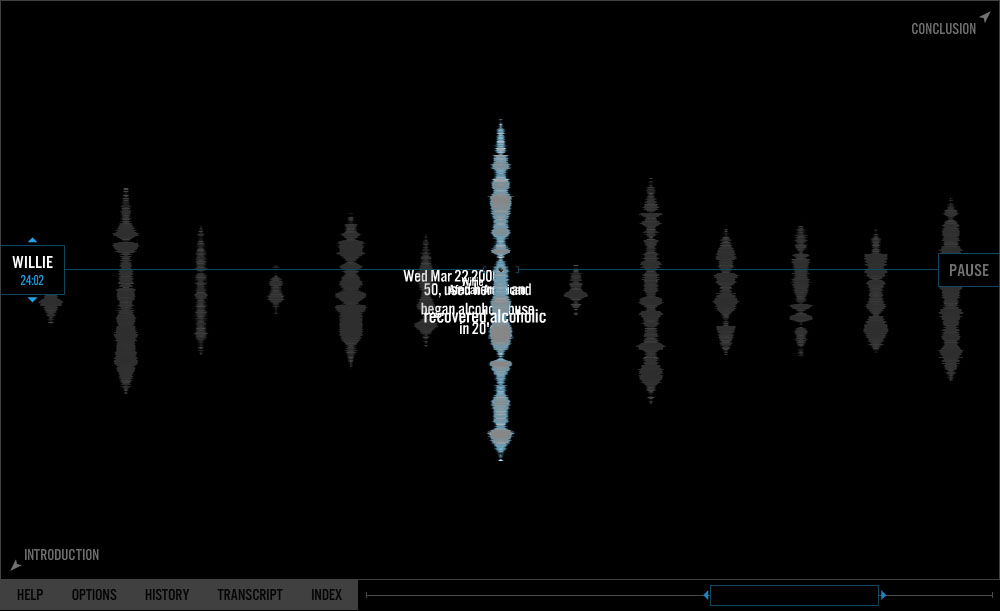Like Public Secrets, Blood Sugar aims to fill a gap in the cultural discourse surrounding disenfranchised individuals and stigmatized communities by simply making their voices available to be heard.
- Steve Anderson, Editor's Introduction
Alternative views of Blood Sugar project data:
 All info and conversations from this project page
All info and conversations from this project page
http://vectors.usc.edu/xml/projects/blood_sugar_v1.xml
 RSS feed of the conversations from this project page
RSS feed of the conversations from this project page
http://vectors.usc.edu/rss/project.rss.php?project=95
http://vectors.usc.edu/xml/projects/blood_sugar_v1.xml
http://vectors.usc.edu/rss/project.rss.php?project=95
Editor's Introduction
Blood Sugar operates as a companion piece to author Sharon Daniel and designer Erik Loyer's earlier, Webby award-winning Vectors project Public Secrets. Like their earlier work, which featured the voices of women in the California State Prison system, the primary content of Blood Sugar is a voice archive compiled from painstakingly recorded interviews with participants in an HIV prevention and needle exchange program in Oakland, CA. These are voices seldom heard from the "other" side of this country's mendaciously named "war on drugs." The project invites listeners to set aside their prejudices and assumptions in order to directly engage the stories of intravenous drug users - a public whose near total lack of self-representation has led to deep misunderstanding at best, demonization and dehumanization at worst. That said, Daniel's approach is not to "speak for" this population, nor is it to put forward a didactic social agenda. Like Public Secrets, Blood Sugar aims to fill a gap in the cultural discourse surrounding disenfranchised individuals and stigmatized communities by simply making their voices available to be heard. Loyer's design of the project also expands upon the algorithm-driven structure of Public Secrets, adding a dynamic visual metaphor that invites users to "zoom in" to follow conceptual threads or individual stories. Daniel's work, which frequently engages concepts of borders and limits, is interested in this case in the boundary - namely the skin - that separates the inside of our bodies from the outside. Users are invited to engage the project from the point of view of a surrogate for the needle that literally penetrates the surface of the skin, allowing them to delve more deeply and intimately into a given person's testimony. This subject position suggests a subtle parity between the "user" of the interface and the IV drug "user" who is, for many of us, ordinarily held at a distance if not ignored entirely. At first, the visceral pleasures of the project - keywords that glide in elliptical orbits around a pulsing nucleus - may seem antithetical to the raw struggles for survival and dignity that characterize many of the testimonies. But it is the power of the individual stories that keeps the project from becoming an exercise in voyeurism or fetishized tragedy. In the end, Blood Sugar also asks bigger questions about the role that art can and should play in highly politicized and volatile issues of personal empowerment and social justice, inviting complexity and specificity into the conversation rather than simply telling people what to think, feel or do about it.
— Steve Anderson, April 4th, 2010


